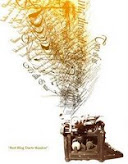In the early 1900s, some artists became interested in African and Native American art. The styles of those cultures inspired cubism.
Cubism began in France in 1907. Pablo Picasso and George Braque began painting figures that were made up of cubes, spheres, cylinders, cones, and other geometric shapes. The paintings looked like someone had cut them up and glued them back together.
Cubism began in France in 1907. Pablo Picasso and George Braque began painting figures that were made up of cubes, spheres, cylinders, cones, and other geometric shapes. The paintings looked like someone had cut them up and glued them back together.

And that’s exactly what the cubists had in mind. Just like the ancient Egyptians, cubists wanted to show the most important parts of the things they painted. Look at the face in Juan Gris' Portrait of Picasso (above). Gris shows you every detail of Picasso's face even though you would never be able to see all sides of his face at the same time. The cubists took this idea much further than the ancient Egyptians, of course. Cubists wanted to show all the sides of an object in the same picture.
 Some cubist paintings were extremely abstract. In Picasso’s The Guitar Player (above), it is difficult to see the person in the painting.
Some cubist paintings were extremely abstract. In Picasso’s The Guitar Player (above), it is difficult to see the person in the painting.At first, cubists used very little color in their paintings. They used mostly browns, greys, and blues. In 1912, color re-entered the picture and some artists, like Picasso, began using more then just paint and canvas in their art. You may remember reading about Picasso’s musical collages in which he used paper and cloth in his paintings.
Return to main page.








62 comments:
A simple, but perfect, description of cubism! Bravo!
Thanks, Peter! I'm glad you're back from your trip. I'm already enjoying your lovely photos!
mmm cubism
oooohhhhhhhh cubism
thx 4 helping me with my hw i justcopied and pasted LOL
It is a wonder description, but what about if we need to teach younger kids? what could we do for that?
WHAT CAN WE TEACH YOUNGER KIDS ABOUT CUBISM?
Good information!
This is a very helful bit of info thank you who ever wrote this it has been a great help!!! :D
usefull info about cubism, helped me with my art homework alot,,
dont see y there is a huge convo at the bottom :S I miss henry tooo so much, it hurts me
im doing this for a art homewok thingy and this was the first website. i think its not got a lot of information. i know its for kids and everything but its more year 5-6 than high school years and that is what im doing it for.
by finchy age 13 yr 8
It's absolutely perfect for my art homework. We are doing cubism (obviously!) at the moment and this website gave me a perfect description, so I could interprate it in my own way.
THANK YOU!! xx
Grrrrr...
Art is soooo boring
This site on cubism is brilliant for my homework. A great description!
this is a great help, thanks alot xx
What art elements did the Cubist artists use in their art. was is LIn, Tone, Shape, Pattern, Mark making, texture or colour (it can be more than one) please anyone reply asap, thanks
i am using this fro a cubsim report and i really like this page!!!!
thanks will put u in the bibliography!!!!!
this is really good for my homework for art! thankyou soo much! xx
good info on cubism.
a simple piece of info but a good description
great description of cubism
I ALSO THINK THEY ARE NICE
Thanks this helped with my homework
African art was an ispiration and something like "fashion" then, as the impressionist used the japanese prints, BUT nobody mentioned Paul Cezanne that HE IS the father of Cubism. He was the first that talked about how to see the nature, like cube,cylinder and sphere.Picasso admired very much Cezanne and he owned a painting of him in his studio these days.
That period in the cafes' of Paris even the artists as poets, writers and scientists were discussing a lot about arts, literature, new scientific theories ecc. The Principle of relativity of the famous french mathematician Poincaré (http://en.wikipedia.org/wiki/Henri_Poincar%C3%A9)was one of their discussions. Picasso was intrested a lot in that theory,about the 4th dimansion, while he was painitg the Les Demoiselles d'Avignon (1907)
Study and read more people.
PS.
for the students....
Don't "copy-paste" everything u read in the internet.
Go to a LIBRARY.
Aspasia,
Thank you for your thoughtful comment. You're right that there is a lot more to learn about cubism. I encourage readers to continue reading and continue researching. This blog is meant only as a starting point for kids who are interested in learning more about art and for parents and teachers who do not have backgrounds in art but want to impart some art knowledge to their kids. You sound like you have a lot to add to the discussion about cubism and I encourage you to do so!
:D Hi Joyus!
:P Hey Aneka! LOL
I SEE YOU!!!!!O.O
Dhahaha! So do I.. LMAO stop playn' around b4 you get SNAPPED lol! :}
=D->-<
what were the names of the paintings as well as the dates and painter
Nice Work on the page Jessica. It is really good.
cubism gives meaning of art. it made understand; OB at LUCT
Really helped me with my homework Thnx
thanks for the hwork info!
thanks!!! this info is way more helpfull than wikipedia (it has to much words)
Needs to be better for kids
This was really helpful, thank you.
thanks! this was great for my homework!
Thanks great infomation for my homework
Well Done
this is a great website with not too many words!
Thank you very much this helped me alot with my homework on cubism x Well done thank you xx
Thank you very much this help me alot with my art homework in Cubism, i now understand! Thank you xx
African art was an ispiration and something like "fashion" then, as the impressionist used the japanese prints, BUT nobody mentioned Paul Cezanne that HE IS the father of Cubism. He was the first that talked about how to see the nature, like cube,cylinder and sphere.Picasso admired very much Cezanne and he owned a painting of him in his studio these days.
That period in the cafes' of Paris even the artists as poets, writers and scientists were discussing a lot about arts, literature, new scientific theories ecc. The Principle of relativity of the famous french mathematician Poincaré haha i copyed the art teachers stuff
I JUST LOVE CUBISM
Cubism was a 20th century avant-garde art movement, pioneered by Pablo Picasso and Georges Braque, that revolutionized European painting and sculpture, and inspired related movements in music, literature and architecture. In cubist artworks, objects are broken up, analyzed, and re-assembled in an abstracted form—instead of depicting objects from one viewpoint, the artist depicts the subject from a multitude of viewpoints to represent the subject in a greater context. Often the surfaces intersect at seemingly random angles, removing a coherent sense of depth. The background and object planes interpenetrate one another to create the shallow ambiguous space, one of cubism's distinct characteristics.
Historians have sought to analyze the history of cubism in terms of phases. In one scheme, a first branch of cubism, known as Analytic Cubism, was both radical and influential as a short but highly significant art movement between 1907 and 1911 in France. In a second phase, Synthetic Cubism, the movement spread and remained vital until around 1919, when the Surrealist movement gained popularity. English art historian Douglas Cooper proposed another scheme, describing three phases of Cubism in his seminal book, The Cubist Epoch. According to Cooper there was "Early Cubism", (from 1906 to 1908) when the movement was initially developed in the studios of Picasso and Braque; the second phase being called "High Cubism", (from 1909 to 1914) during which time Juan Gris emerged as an important exponent; and finally Cooper referred to "Late Cubism" (from 1914 to 1921) as the last phase of Cubism as a radical avant-garde movement.
this is great for my hwk ta!
Thank you so much for a simple and effective description of Cubism. This is just the sort of clear information that my son (year 8) needs for his art homework. Once the fundamentals are understood he can go on to more detailed sites if he wants to.
This Helped me so much for my Art Homework!
Thanks. That was easy. I'VE FINISHED MY HOMEWORK!!!!!!!!!!!!
Wow this is a great description of cubism.
LOL thanks for doing my coursework!
I am a student in year 7 and I needed some info on Cubism for an art project and I used this website for my main info and I did really well, so I just wanted to say Thank You sooooooooooooooooo much!! xoxoxo
Really Good Explanation, Very Helpful! Thankyou!!! (I used this for my homework!)
Thanks for this, it has been very helpful. Much better to understand than Wikipedia!
Thanks very much, this has been very helpful. Much better to understand than Wikipedia!
Thanks very much, this has been very helpful. Much better to understand than Wikipedia!
this was very helpful for me, very straight forward and clear description and answer for what cubism is, thanks a load!
this was very helpful for me, very straight forward and clear description and answer for what cubism is, thanks a load!
Thanks really helped with my homework.
amazing
Post a Comment